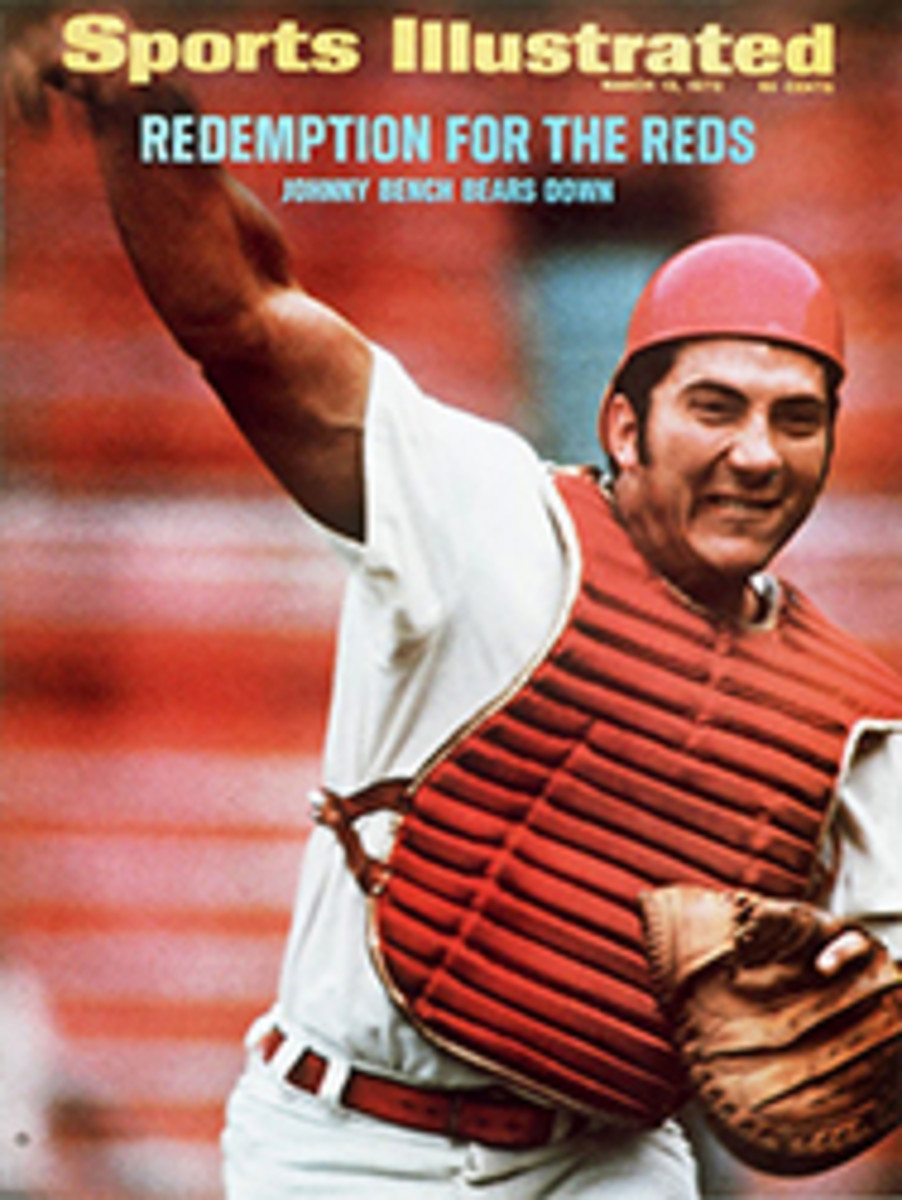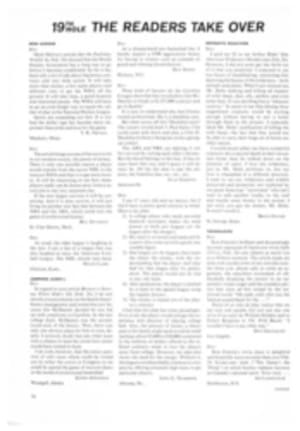
Some serpents and apples are showing up in pro basketball's Garden of Eden
A little over a year ago Kenyon and Eckhardt, a New York ad agency, came up with a study that claimed to show that basketball was the sport of the '70s. The 65-page treatise held that basketball is a simple game nurtured in the ghetto streets and would dovetail with America's new activism. In turn, the game would thrust pro football into the shadows as a straight-arrow, middle-class entertainment.
As it happens, Kenyon and Eckhardt's crystal ball was seriously clouded. Since the study, professional football has shown not a decline but a spectacular jump of almost 10% in audience. By contrast, television ratings for professional basketball, while increasing slightly, have slipped relative to some other attractions.
The average NBA national telecast produced by ABC was seen in 4,590,000 homes during the 1968 season. The number of homes tuned in jumped by 480,000 in 1969 and by 550,000 the following season. So far so good. But last year the gain was sliced to 270,000, a bad omen for a business whose profits are linked to audience growth. It does not mean that pro basketball is a bad buy for sponsors—according to Nielsen its cost per thousand of $4.13 compares well with other sports—but it poses some nagging business questions.
ABC sells 18 one-minute commercial spots on NBA telecasts at an average of $20,000 each, grossing some $360,000 per game, or $11.5 million for the current 32-game season. By themselves, these numbers seem impressive. On the other hand, ABC paid out $5.8 million for the rights to carry the NBA games, and its production costs run another $1.5 million. Other outlays cut deeply into what remains, leaving a rather thin profit margin for "the game of the '70s."
The network is considering some adjustments to turn things around. One way to achieve higher ratings would be regional coverage, as is done with pro football. ABC has experimented in the past with regional telecasts and did so again this season. Next year it will expand the experiment. But costs go up with each game added, and it is problematical whether the rate card can completely offset this.
"The results of these telecasts will have a distinct bearing on our approach when renewal time comes," says Jim Spence, ABC Sports' vice-president of sports program planning.
Predictably, NBA Commissioner Walter Kennedy views the slowdown in basketball's TV popularity as only temporary. "I think we can do 50 games on national TV each year without overexposure," he contends.
What all of this fails to take into account is the type of audience NBA games are attracting. Advertising agencies have made demographics—the analysis of audience, age, income and education—an obsession in recent years. Anyone trying to sell time or space these days simply cannot afford to ignore these factors, and vast amounts of money are spent trying to prove...well, whatever it is one wants to prove.
The key element is audience income—how much has the viewer got to spend on the sponsor's product? ABC claims that 52% of the families watching NBA basketball earn more than $10,000 a year, which is reasonably good if you can believe the sampling: 3,500 households out of 62 million.
But if NBA telecasts have flattened out as an attraction, there seems only one direction for college basketball on TV: onward and upward. Seven telecasts of the NCAA playoffs on NBC last season averaged 6,730,000 homes, an increase of 410,000 over 1970 and 1,260,000 over the previous year. According to TVS, an independent company, its 13 regular-season productions averaged 4,980,000 homes, impressive because TVS had to fashion its own network and market from scratch five years ago. Its potential coverage encompassed 97% of the available TV sets in America.
No better evidence of the collegiate boom-let can be found than in the success of Coliseum Sports, led by a 29-year-old producer named Dan Shedrick. His firm expects a neat profit from commercial sales of around $1 million, generated out of only six national telecasts. Shedrick violated basketball's unwritten law of television by making his sales pitch in December, when money is tight. But Shedrick explains, "Sure, there wasn't much money around last December, but we were about the only ones competing for it." Shedrick's premier game, Notre Dame vs. UCLA, looked like a brilliant coup when it was booked but turned out to be one of the season's colossal mismatches. "It was worth the risk," Shedrick says now.
Coliseum managed to get station clearances in 80% of the nation's markets, and it pegged its commercials at a top of $18,000 apiece, with 10 of them per game. Coliseum signed Elgin Baylor to man the microphone with old hand Charlie Jones. Despite its rights fee of $20,000 per game and quality production, Coliseum has made its series into a small but profitable package.
If one development in the TV basketball picture has torpedoed the Kenyon and Eckhardt report, it is the picture in the ABA, which had planned a regional series among four of its most successful franchises—Carolina, Indiana, Kentucky and Virginia. At the last minute the series was canceled for lack of sponsors.

